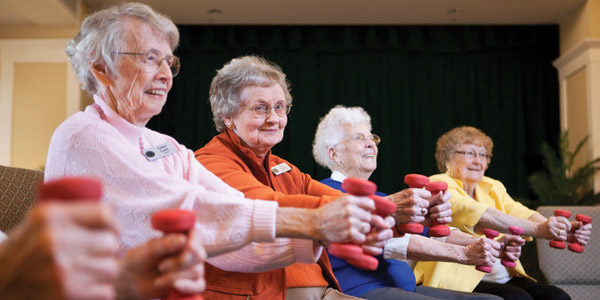9 Best Health Activities for Retirement

Looking for the best health activities to enjoy during retirement?
Look no further! We’ve got you covered with these 9 amazing options.
Whether you’re into brisk walking, yoga, swimming, cycling, tai chi, water aerobics, golf, dancing, or strength training, there’s something here for everyone.
Take charge of your health and make the most of your retirement by staying active and fit.
Let’s dive in and discover the perfect activities for you!
Key Takeaways
- Yoga and flexibility activities such as yoga for seniors, chair yoga for seniors with mobility issues, and restorative yoga can enhance overall well-being, improve flexibility and range of motion, reduce stress levels, and increase strength and stability.
- Low-impact cardiovascular activities like brisk walking, swimming, cycling, and water aerobics are gentle on the joints, improve cardiovascular health, provide a full-body workout, and reduce stress while promoting mental well-being and joint support.
- Balance and coordination activities such as Tai Chi can improve balance and coordination, reduce the risk of falls and injuries, provide stress relief, enhance flexibility and range of motion, and promote a mind-body connection.
- Outdoor activities like brisk walking, cycling, and golf provide outdoor activity, allow for social interaction, improve grip, swing mechanics, and posture (in the case of golf), and focus on proper stance and posture.
Brisk Walking
To maintain good health during retirement, incorporate brisk walking into your daily routine. Brisk walking is an excellent form of exercise that can help improve cardiovascular health, increase stamina, and boost overall well-being. It’s a low-impact activity that’s gentle on the joints, making it ideal for seniors who may have arthritis or other mobility issues.
By engaging in brisk walking, you can also enjoy the benefits of being outdoors and connecting with nature. Additionally, brisk walking can be a social activity, allowing you to join walking groups or meet friends for a stroll in the park.
If you’re looking to take your exercise routine a step further, consider incorporating yoga for seniors into your schedule. Yoga can help improve flexibility, balance, and strength, all of which are important for maintaining independence and preventing falls.
Yoga
Now let’s talk about yoga, a great health activity for retirement.
Yoga offers numerous benefits for seniors, such as improved flexibility, balance, and stress management.
You can easily incorporate simple yoga exercises into your daily routine to enhance your overall well-being.
Yoga for Seniors
Get the most out of your retirement by incorporating yoga into your daily routine as a senior. Yoga is a wonderful activity that can help improve your physical and mental well-being.
As a senior, you may need to make certain modifications to your yoga practice to ensure safety and comfort. Chair yoga is a great option for seniors who may have difficulty getting down on the floor. This modified form of yoga allows you to perform gentle stretches and poses while seated on a chair or using it for support.
Chair yoga can help improve flexibility, balance, and strength, while also promoting relaxation and reducing stress. It’s a gentle and accessible way for seniors to experience the many benefits of yoga.
Benefits of Yoga
You can experience numerous benefits from practicing yoga during retirement. Here are four reasons why yoga can be beneficial for you, especially if you’re a beginner looking for stress relief:
- Improved flexibility: Yoga poses help to stretch and lengthen your muscles, increasing your flexibility and range of motion. This can be particularly helpful as you age and want to maintain your mobility.
- Reduced stress: Yoga incorporates deep breathing and mindfulness techniques that can help calm your mind and reduce stress levels. It provides a space for you to relax, let go of worries, and focus on the present moment.
- Increased strength: Yoga poses engage and strengthen various muscle groups, helping to improve your overall strength and stability. This can be especially beneficial for maintaining balance and preventing falls as you age.
- Better sleep: Regular yoga practice can help improve the quality of your sleep. The combination of physical movement, relaxation techniques, and breath control can promote a more restful and rejuvenating sleep.
Easy Yoga Exercises
If you’re a beginner looking to incorporate easy yoga exercises into your retirement routine, it’s important to start with simple poses that focus on gentle stretching and relaxation.
Chair yoga is a great option for those who may have difficulty with balance or mobility. It allows you to perform yoga poses while sitting on a chair, making it accessible for everyone. With chair yoga, you can improve your flexibility, strength, and posture without putting excessive strain on your joints.
Another type of easy yoga exercise that’s perfect for retirement is restorative yoga. This practice involves holding relaxed poses for an extended period of time, allowing your body to fully relax and release tension. Restorative yoga can help reduce stress, promote better sleep, and enhance overall well-being.
Incorporating chair yoga and restorative yoga into your retirement routine can provide a gentle and relaxing way to stay active and improve your health.
Swimming
Swimming is a fantastic low-impact cardiovascular exercise that offers numerous benefits for your body. Not only does it provide a joint-friendly full-body workout, but it also helps improve your flexibility and endurance.
Low-Impact Cardiovascular Exercise
For optimal health in retirement, consider incorporating low-impact cardiovascular exercise into your routine, such as engaging in a refreshing swim. It’s a great way to stay active while being kind to your joints. Here are four reasons why swimming is an excellent choice for low-impact cardio:
- Gentle on your body: Swimming provides a weightless environment that reduces stress on your joints, making it perfect for those with arthritis or joint pain.
- Full-body workout: Swimming engages all major muscle groups, improving strength, flexibility, and endurance.
- Heart-healthy: Swimming increases your heart rate, improving cardiovascular fitness and reducing the risk of heart disease.
- Mental relaxation: The rhythmic movements of swimming and the calming effect of water can help reduce stress and promote mental well-being.
Joint-Friendly Full-Body Workout
Stay active and protect your joints with a joint-friendly, full-body workout like swimming. Swimming is a low impact exercise that allows you to work all your major muscle groups without putting stress on your joints. It’s a great way to stay fit and healthy during retirement.
Not only does swimming provide cardiovascular benefits, but it also helps improve flexibility and strength. The gentle stretching and range of motion involved in swimming can help alleviate joint stiffness and pain. Whether you prefer a leisurely swim or a more intense workout, swimming can be tailored to your fitness level and goals.
Improves Flexibility and Endurance
Looking to improve your flexibility and endurance as you enjoy your retirement? Swimming is the perfect activity for you! Not only does it provide a full-body workout, but it also offers numerous benefits that can enhance your overall well-being.
Here are four reasons why swimming is a great choice for improving flexibility and endurance:
- Low impact: Swimming is gentle on your joints, making it an excellent option for those with arthritis or joint pain.
- Increases flexibility: The repetitive movements in swimming help to improve flexibility in your muscles and joints, allowing for greater range of motion.
- Builds endurance: Swimming is a great cardiovascular exercise that can help improve your stamina and endurance over time.
- Reduces stress: The soothing nature of being in the water can help reduce stress and promote relaxation, making swimming an excellent choice for mental and emotional well-being.
Incorporating swimming into your retirement routine can’t only improve your balance and reduce stress but also provide you with a fun and enjoyable way to stay active. So grab your swimsuit and dive right into a healthier retirement!
Cycling
Get the most out of your retirement by incorporating cycling into your daily routine. Cycling for seniors has numerous benefits that can contribute to your overall health and well-being.
Not only does cycling help to improve cardiovascular fitness, but it also strengthens muscles and improves balance and coordination. Regular cycling can also help to reduce the risk of chronic conditions such as heart disease, diabetes, and obesity.
It provides a low-impact exercise option that’s gentle on the joints, making it an ideal choice for older adults. Additionally, cycling outdoors allows you to enjoy the fresh air and beautiful scenery, which can have a positive impact on your mental health.
Tai Chi
Incorporate the practice of Tai Chi into your retirement routine for a multitude of health benefits. Tai Chi is a gentle form of exercise that combines slow, flowing movements with deep breathing and meditation.
Here are four reasons why you should consider adding Tai Chi to your daily activities:
- Tai Chi for Balance: As we age, maintaining good balance becomes increasingly important. Tai Chi helps improve balance and coordination, reducing the risk of falls and injuries.
- Tai Chi for Stress Relief: Retirement can bring about new sources of stress. Tai Chi provides a calming and meditative experience, helping to alleviate stress and promote a sense of inner peace.
- Tai Chi for Flexibility: Regular practice of Tai Chi can improve flexibility and range of motion, making it easier to perform everyday tasks and activities.
- Tai Chi for Mind-Body Connection: Tai Chi focuses on integrating the mind, body, and spirit. This holistic approach can enhance overall well-being and promote a sense of harmony in retirement life.
Incorporating Tai Chi into your retirement routine can have numerous benefits, including improved balance, reduced stress, increased flexibility, and a strengthened mind-body connection. Start your Tai Chi journey today and reap the rewards of this ancient practice.
Water Aerobics
Why should you consider adding water aerobics to your retirement routine after experiencing the benefits of Tai Chi? Water aerobics, also known as aqua fitness, is a fantastic way to engage in low-impact exercise while enjoying the therapeutic properties of water. This form of exercise is particularly beneficial for the aging population as it provides resistance, supports joints, and reduces the risk of injury. Water aerobics offers a wide range of health benefits, including improved cardiovascular health, increased muscle strength, and enhanced flexibility. Moreover, it promotes relaxation and stress reduction, making it an ideal activity for retirees who desire a calming and rejuvenating experience. Take a look at the table below to understand the benefits of water therapy and aqua fitness:
| Benefits of Water Therapy and Aqua Fitness | ||
|---|---|---|
| Improved cardiovascular health | Increased muscle strength | Enhanced flexibility |
| Low-impact exercise | Reduced risk of injury | Relaxation and stress reduction |
| Supports joints | Therapeutic properties of water | Calming and rejuvenating experience |
Golf
After experiencing the benefits of water aerobics, you can continue to enhance your retirement routine by incorporating golf, a popular sport that offers both physical and mental health benefits.
Golfing is a great way to stay active and enjoy the outdoors while improving your fitness levels. Here are four golfing techniques and tips to help you get started:
- Proper grip: Learn how to hold the golf club correctly to have better control over your swings.
- Stance and posture: Maintain a balanced and relaxed stance with proper alignment to improve accuracy and prevent injuries.
- Swing mechanics: Focus on your swing technique, including a smooth tempo, proper rotation, and weight shift for optimal power and accuracy.
- Golfing equipment: Invest in quality golf clubs and shoes that provide comfort and support to prevent strain on your body during the game.
Dancing
To improve your physical and mental health in retirement, consider adding dancing to your routine. Dance fitness is a fun and energizing way to stay active and maintain a healthy lifestyle. Whether you choose to join a dance fitness class or dance alone in your living room, it can provide numerous benefits.
Dancing not only improves cardiovascular fitness and flexibility, but it also enhances coordination and balance. It can even help to reduce stress and boost your mood, promoting overall mental well-being.
If you’re looking for a more structured and social form of dance, ballroom dancing is a great option. It offers the opportunity to learn new dances and connect with others who share your passion for movement.
Strength Training
Start incorporating strength training into your retirement routine to maintain muscle mass and improve overall strength.
Strength training has numerous benefits for seniors, including:
- Increased bone density: Regular strength training can help prevent osteoporosis and improve bone health, reducing the risk of fractures and falls.
- Enhanced metabolism: As we age, our metabolism slows down. Strength training can help boost metabolism, aiding in weight management and overall health.
- Improved balance and stability: Strength training exercises target the muscles that support balance, reducing the risk of falls and improving mobility.
- Increased independence: By maintaining muscle mass and strength, strength training allows seniors to maintain their independence and perform daily tasks with ease.
Incorporating strength training into your retirement routine not only keeps you physically strong but also promotes a sense of well-being and confidence. Remember to start slowly and consult with a professional to ensure proper form and technique.
Frequently Asked Questions
Can I Incorporate Multiple Health Activities for Retirement or Should I Focus on Just One?
You can incorporate multiple health activities for retirement or focus on just one. Variety is important for your retirement health activities. It’s up to you to decide what works best for serving others.
Are There Any Age Restrictions or Physical Limitations for Participating in Water Aerobics?
There are no age restrictions or physical limitations for participating in water aerobics. It is a low-impact activity that can be enjoyed by people of all ages and fitness levels.
What Are the Specific Health Benefits of Practicing Tai Chi in Retirement?
Practicing tai chi in retirement offers specific health benefits like improved balance, flexibility, and reduced stress. To get started, find a local tai chi class or use online resources. Take care of your well-being in retirement.
Is It Necessary to Join a Gym or Fitness Center to Engage in Strength Training for Retirement?
You don’t need a gym for strength training in retirement. There are alternatives like resistance bands or bodyweight exercises. Outdoor activities like hiking or gardening can also provide health benefits for seniors.
Are There Any Recommended Resources or Online Platforms for Learning and Practicing Yoga at Home During Retirement?
You can easily find recommended online resources for learning and practicing yoga at home during retirement. These resources can help you create a daily exercise routine that will benefit your health and well-being.








